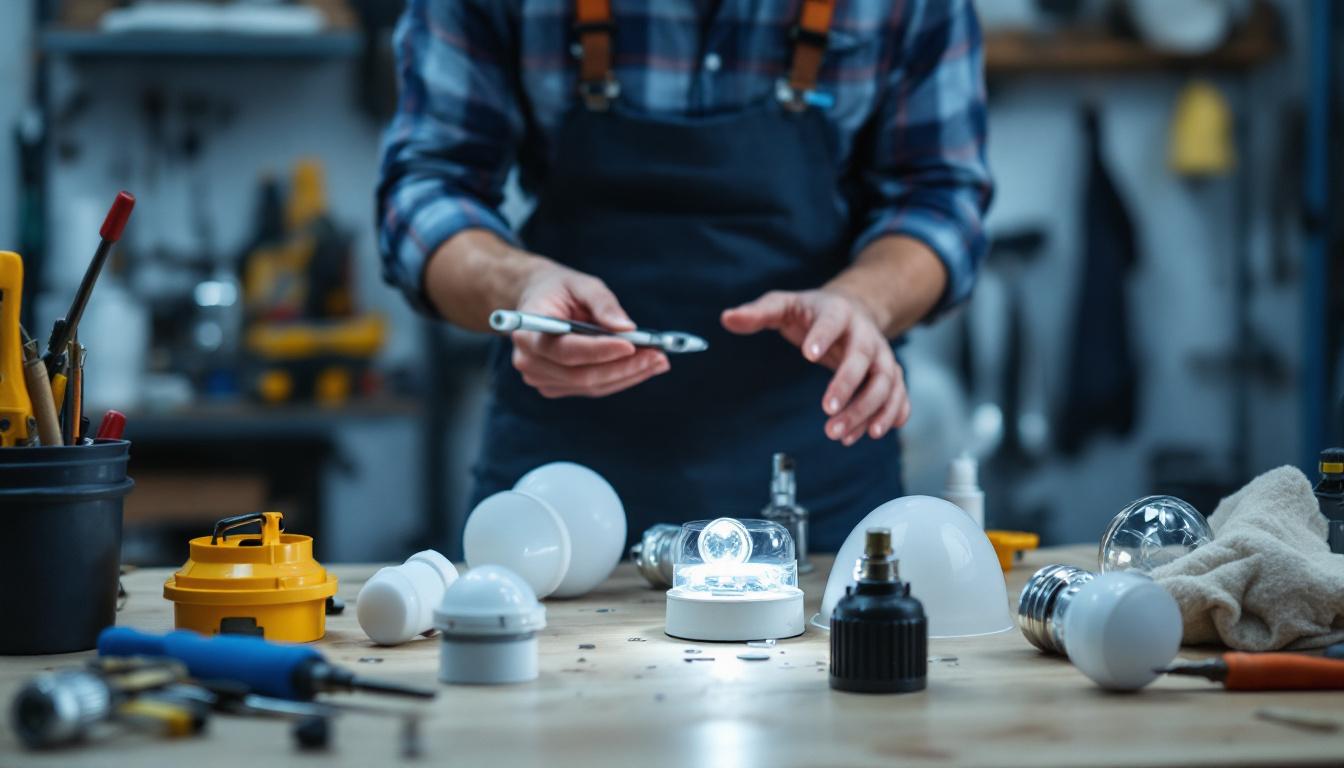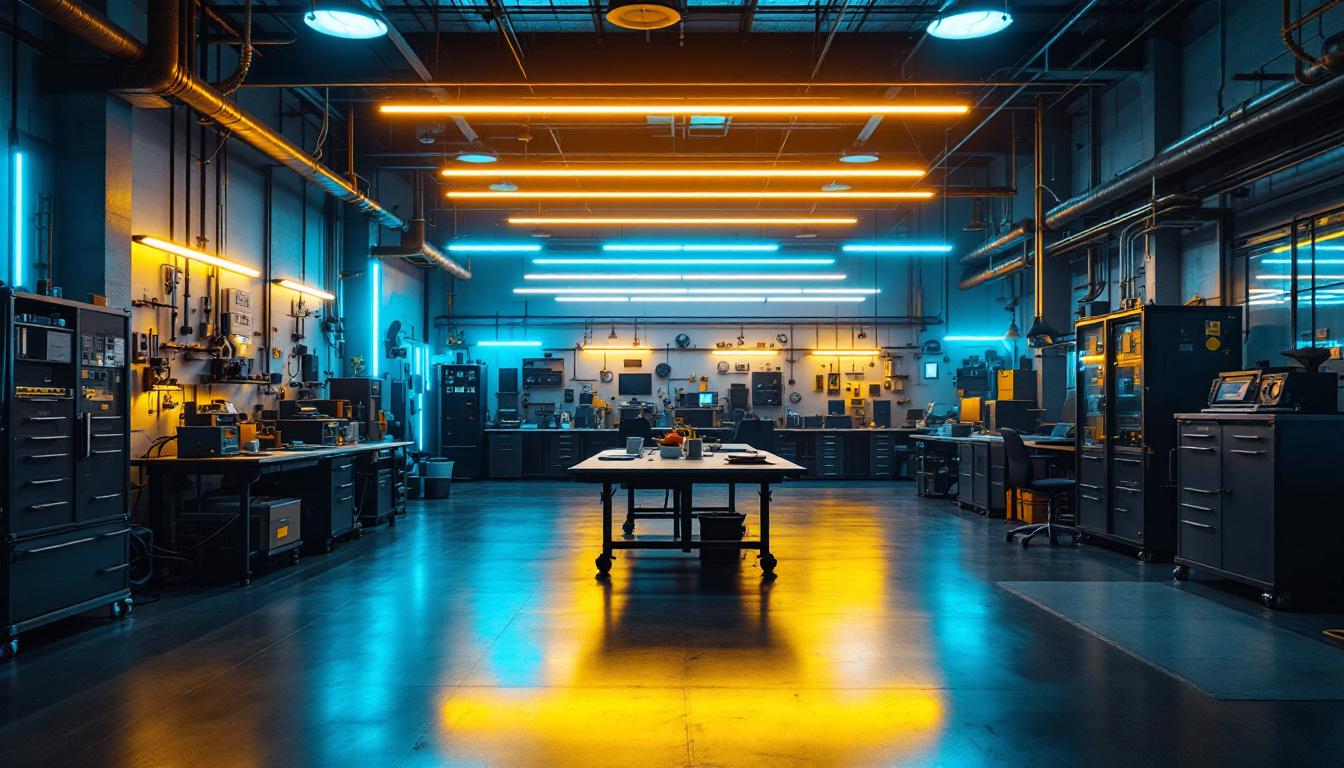
High output LED lamps have revolutionized the lighting industry, offering unparalleled efficiency, longevity, and versatility. For lighting contractors, mastering the nuances of these lamps is crucial to delivering optimal results for clients across commercial, industrial, and residential projects.
Unlike traditional incandescent or fluorescent bulbs, high output LEDs provide intense illumination with significantly lower energy consumption. This not only reduces operational costs but also aligns with increasing regulatory demands for energy-efficient solutions. As contractors, understanding the technical specifications, performance metrics, and application scenarios of these lamps forms the foundation for successful installations.
High output LEDs are characterized by their ability to deliver high lumen output from a compact form factor. Key features include:
For contractors, recommending and installing high output LED lamps is not just about embracing new technology—it’s about delivering tangible value to clients. These lamps support compliance with energy codes such as ASHRAE 90.1 and local green building standards, making them a strategic choice for projects aiming for LEED certification or similar sustainability benchmarks.
Moreover, the adaptability of high output LEDs to various fixtures and controls enables contractors to design lighting systems that enhance occupant comfort, productivity, and safety. This positions contractors as trusted advisors, fostering long-term client relationships.
Additionally, the color rendering index (CRI) of high output LEDs often exceeds 80, which is essential for applications where accurate color representation is critical, such as in retail spaces or art galleries. This feature allows clients to showcase their products or artwork in the best possible light, enhancing the overall aesthetic appeal and customer experience. Furthermore, many high output LED lamps are now available with tunable white technology, allowing users to adjust the color temperature according to the time of day or specific activities, thereby improving mood and productivity in workplaces.
As the market continues to evolve, the integration of smart technology with high output LEDs is becoming increasingly prevalent. Contractors can leverage smart lighting controls that allow for remote management, dimming capabilities, and automated scheduling. This not only provides convenience but also optimizes energy usage, further enhancing the sustainability profile of the installation. By staying abreast of these advancements, contractors can offer cutting-edge solutions that meet the dynamic needs of their clients while setting themselves apart in a competitive industry.
Before selecting and installing high output LED lamps, contractors must rigorously evaluate technical specifications and ensure compliance with industry standards. This section outlines the critical parameters to consider.
Verify the lumen output to match the lighting requirements of the space. For example, warehouses and gymnasiums often require lamps exceeding 10,000 lumens for adequate illumination. Equally important is luminous efficacy, measured in lumens per watt (lm/W), which indicates energy efficiency. High output LEDs typically achieve 120-150 lm/W, significantly outperforming older technologies. This efficiency not only reduces energy costs but also minimizes heat generation, contributing to a longer lifespan for the lighting system. When evaluating lumen output, it is also essential to consider the uniformity of light distribution to avoid dark spots and ensure a well-lit environment.
Color temperature affects the ambiance and functionality of a space. High output LEDs are available in a range of correlated color temperatures (CCT), from warm white (2700K) to daylight (6500K). Selecting the appropriate CCT depends on the application; for instance, retail environments benefit from warmer tones to enhance product appearance, while industrial settings may prefer cooler, daylight-like illumination for clarity. The choice of color temperature can also influence employee productivity and mood, making it a critical factor in workplace design.
CRI measures how accurately a light source renders colors compared to natural light. A CRI of 80 or above is generally recommended for most commercial applications, while specialized environments like art galleries may require CRI values above 90. In addition to CRI, the spectral power distribution (SPD) of the LED can also impact color perception, making it essential to consider both metrics when selecting lighting for spaces where color accuracy is paramount.
Effective thermal management is critical to maintaining lamp performance and lifespan. Contractors should inspect heat sink design and materials, ensuring they facilitate adequate heat dissipation. Additionally, the LED driver—the component that regulates power—must be reliable and compatible with dimming controls if required. Look for drivers with surge protection and certifications such as UL or CE to guarantee safety and durability. The quality of the driver can significantly affect the overall performance of the LED system, as inferior drivers may lead to flickering, reduced efficiency, and premature failure of the lamps.
Ensure lamps meet relevant certifications including DLC (DesignLights Consortium) for commercial energy efficiency programs, UL listing for safety, and RoHS compliance for hazardous substances. These certifications not only validate product quality but also enable clients to qualify for utility rebates and incentives. Furthermore, understanding the environmental impact of the products is crucial; selecting LEDs that are free from toxic materials and are recyclable can contribute to a more sustainable project. It is also advisable to stay informed about local regulations and standards, as they can vary significantly and may affect the selection process.
Proper installation is vital to maximizing the benefits of high output LED lamps. Lighting contractors must follow best practices to ensure safety, performance, and client satisfaction.
Conduct a thorough site assessment to understand existing lighting conditions, electrical infrastructure, and environmental factors. Measure ambient temperatures, ceiling heights, and fixture compatibility. This data informs lamp selection and placement strategies to achieve uniform illumination and avoid glare or shadows.
High output LEDs can be used in new fixtures or as retrofits for existing lighting systems. When retrofitting, verify that the LED lamp dimensions, base type, and electrical requirements match the existing fixture. Some older fixtures may require rewiring or ballast bypass to optimize LED performance and prevent energy loss.
Follow National Electrical Code (NEC) guidelines for wiring, grounding, and circuit protection. Use appropriately rated cables and connectors to handle the electrical load. Ensure that drivers and lamps are installed in well-ventilated areas to prevent overheating. Always de-energize circuits before installation to protect personnel.
After installation, perform comprehensive testing to verify lamp operation, dimming functionality (if applicable), and lighting levels. Use light meters to measure illuminance and confirm compliance with project specifications. Document results and provide clients with operation and maintenance instructions to facilitate long-term success.
Although high output LED lamps require less maintenance than traditional lighting, contractors should establish maintenance protocols to ensure sustained performance and client satisfaction.
Schedule periodic inspections to check for dust accumulation, fixture integrity, and electrical connections. Dust and debris can reduce light output and impair heat dissipation. Cleaning should be performed with non-abrasive materials and following manufacturer recommendations to avoid damage.
Common problems include flickering, dimming failure, or complete lamp outage. Flickering may indicate driver issues or voltage fluctuations, while dimming failures often stem from incompatible controls or wiring errors. Troubleshoot by isolating components, verifying wiring, and replacing defective parts as necessary.
As technology advances, newer high output LED lamps may offer improved efficacy or features. Advise clients on upgrade options during maintenance visits, highlighting potential energy savings and enhanced lighting quality. When replacing lamps, always use compatible models to maintain system integrity.
Lighting contractors play a pivotal role in helping clients realize the financial and environmental benefits of high output LED lamps. Understanding available incentives and energy-saving strategies enhances the value proposition.
Demonstrate potential savings by comparing the wattage and lifespan of high output LEDs against incumbent lighting. For example, replacing a 400-watt metal halide lamp with a 150-watt LED can reduce energy consumption by over 60%. Over the lamp’s lifespan, this translates into substantial cost reductions.
Many utility companies offer rebates for installing energy-efficient lighting. Contractors should research local programs and assist clients in application processes. Proper documentation, including product specifications and installation verification, is essential to secure these incentives.
Pairing high output LEDs with lighting controls such as occupancy sensors, daylight harvesting, and programmable timers can further reduce energy use. Contractors should design systems that leverage these technologies to optimize lighting based on occupancy and natural light availability, delivering smarter, sustainable solutions.
For lighting contractors, high output LED lamps represent a compelling opportunity to deliver superior lighting solutions that meet modern demands for efficiency, quality, and sustainability. By adhering to a comprehensive checklist—from understanding technical specifications and standards to executing best installation practices and maintenance—contractors can ensure successful projects that satisfy clients and contribute to a greener future.
Staying informed about evolving technologies, codes, and incentive programs empowers contractors to position themselves as industry leaders. Ultimately, this knowledge translates into enhanced project outcomes, stronger client relationships, and a competitive edge in the dynamic lighting market.
Ready to elevate your lighting projects with high output LED lamps that promise efficiency, quality, and sustainability? Look no further than LumenWholesale. We offer contractors an unbeatable selection of top-quality, spec-grade lighting products at wholesale prices that defy the market. Say goodbye to middleman markups and hello to premium lighting solutions that meet the highest industry standards. With free shipping on bulk orders, LumenWholesale is your go-to source for lighting that combines quality, affordability, and convenience. Don’t compromise on your lighting needs—choose LumenWholesale for Wholesale Lighting at the Best Value.

Discover innovative cost-saving strategies for lighting contractors focusing on sourcing and selecting parts for light fixtures.

Discover how mastering emergency and exit lighting can give lighting contractors a competitive edge in bidding.

Discover the transformative power of industrial LED strip lights with insights from expert lighting contractors.

Discover the evolution of artificial light and its impact on modern businesses.